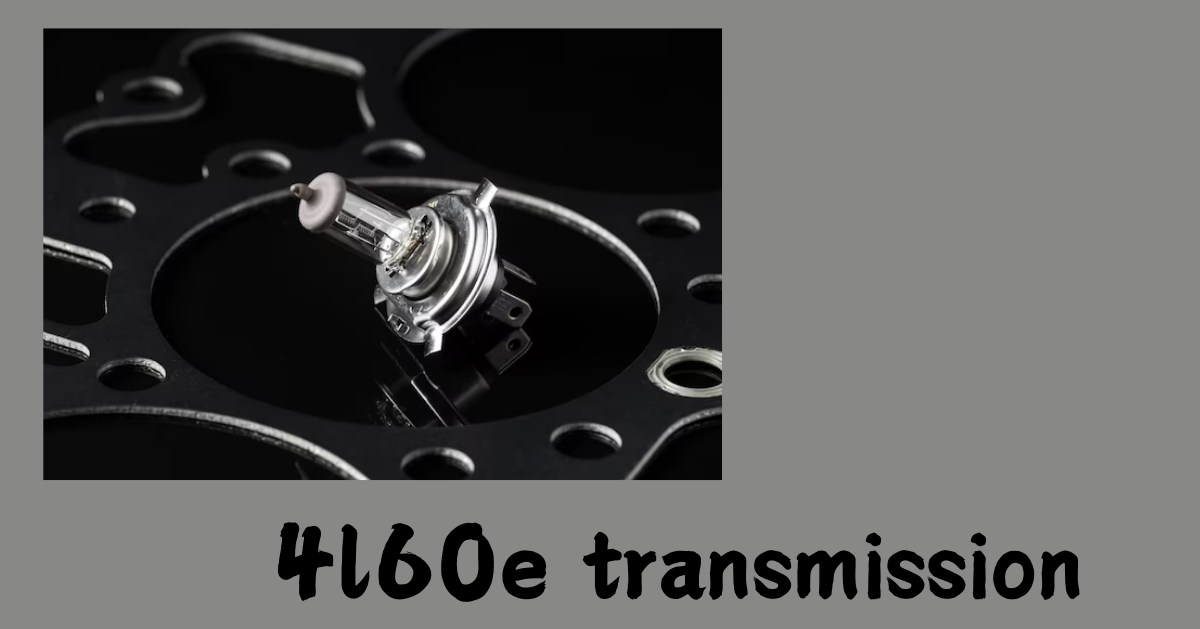The 4L60E transmission is one of the most well-known automatic transmissions in automotive history. Designed for versatility, reliability, and efficiency, it has powered countless vehicles for decades. If you’re a car enthusiast, mechanic, or someone who simply wants to know more about this legendary gearbox, you’ve landed in the right place. In this guide, we’ll take an in-depth look at the 4L60E transmission, its features, history, common issues, and more.
What Is the 4L60E Transmission?
The 4L60E is a four-speed automatic transmission with electronic control, primarily used in General Motors (GM) vehicles. It’s an evolution of the 700R4 transmission and has been a staple in GM’s lineup since the early 1990s.
Key Features of the 4L60E Transmission
The 4L60E boasts several impressive features:
Four-Speed Gearbox: Designed for smooth transitions between gears.
Electronic Control: Integrated for improved efficiency and adaptability.
Overdrive Functionality: Enhances fuel efficiency, especially during highway driving.
Compact Design: Fits a wide variety of vehicle models.
History of the 4L60E Transmission
The 4L60E transmission was introduced in 1993 as a successor to the 700R4. GM developed it to meet the growing demand for electronically controlled transmissions. Over the years, it has been upgraded and refined to improve performance and reliability.
Applications of the 4L6E Transmission
This transmission has been used in various vehicles, including:
Chevrolet Silverado and Suburban
GMC Sierra and Yukon
Pontiac Firebird
Chevrolet Camaro
Cadillac Escalade
How the 4L6E Transmission Works
The 4L60E uses electronic signals from the vehicle’s control module to manage gear shifts. Sensors monitor factors like throttle position, speed, and load to ensure optimal performance.
Advantages of the 4L6E Transmission
Versatility: Compatible with many vehicles.
Fuel Efficiency: Overdrive reduces fuel consumption.
Durability: Built to handle heavy-duty applications.
Aftermarket Support: Widely available parts and upgrades.
Common Issues With the 4L6E Transmission
No transmission is perfect, and the 4L60E has its share of common issues:
Slipping Gears: Often caused by worn clutches or low fluid levels.
Shifting Problems: Typically linked to solenoid or valve body issues.
Overheating: A result of inadequate cooling or heavy use.
Torque Converter Failure: Leads to poor acceleration and noise.
Maintaining Your 4L6E Transmission
Proper maintenance can extend the life of your 4L60E:
Regular Fluid Changes: Replace transmission fluid every 30,000-50,000 miles.
Inspect for Leaks: Address any fluid leaks immediately.
Use High-Quality Fluids: Ensure compatibility with the transmission.
Monitor Cooling Systems: Overheating can cause severe damage.
Upgrading the 4L6E Transmission
Many car enthusiasts upgrade their 4L60E for better performance. Popular upgrades include:
Heavy-Duty Clutches: Enhance durability.
Shift Kits: Improve shift timing and firmness.
High-Performance Torque Converters: Boost acceleration and towing capacity.
Cooler Systems: Prevent overheating during intense use.
Signs Your 4L6E Transmission Needs Repair
Be on the lookout for these warning signs:
Delayed Shifting: Indicates internal wear.
Strange Noises: Grinding or whining sounds can signal trouble.
Burning Smell: Often caused by overheating or burnt fluid.
Dashboard Warning Lights: Check for transmission-related error codes.
4L6E Transmission vs. 4L80E Transmission
The 4L80E is a heavier-duty version of the 4L60E. While both share similar technology, the 4L80E is designed for higher torque applications, making it suitable for larger trucks and vans.
How to Identify a 4L6E Transmission
To identify a 4L60E, check the following:
Transmission Tag: Located on the case, it contains model details.
Pan Shape: The 4L60E has a rectangular pan with 16 bolts.
Bolt Pattern: Specific to GM’s small-block engines.
Rebuilding vs. Replacing the 4L60E Transmission
If your 4L60E fails, you have two main options:
Rebuilding: A cost-effective solution for minor issues.
Replacing: Ideal for severe damage or upgrading to a better version.
Cost of 4L60E Transmission Repairs
Repair costs vary based on the issue:
Minor Repairs: $300–$800.
Full Rebuilds: $1,500–$3,000.
Replacement: $2,000–$4,000 depending on the source and warranty.
Is the 4L60E Transmission Right for You?
The 4L60E is an excellent choice for those who value reliability and versatility. It’s especially ideal for GM enthusiasts and anyone needing a transmission with strong aftermarket support.
Conclusion
The 4L60E transmission remains a popular and dependable option for many vehicles. Whether you’re maintaining one, looking to upgrade, or considering a replacement, understanding its features and capabilities is essential. With proper care, this gearbox can serve you well for years to come.
FAQs
What vehicles use the 4L60E transmission?
The 4L60E is found in GM cars and trucks, including the Chevrolet Silverado, GMC Yukon, and Cadillac Escalade.
How can I tell if my 4L60E transmission is failing?
Common signs include slipping gears, delayed shifting, and unusual noises.
Can the 4L60E transmission handle towing?
Yes, but ensure your vehicle is equipped with the proper cooling system to prevent overheating.
What’s the difference between the 4L60E and 700R4 transmissions?
The 4L60E features electronic controls, while the 700R4 relies on hydraulic control.
How often should I service my 4L60E transmission?
Regular fluid changes and inspections are recommended every 30,000-50,000 miles.

